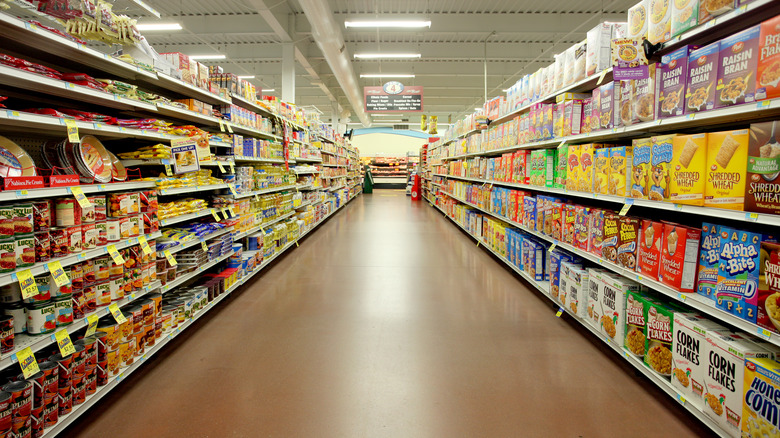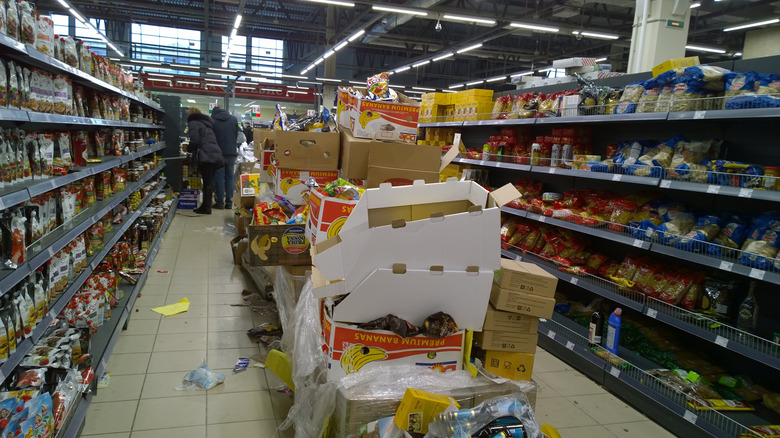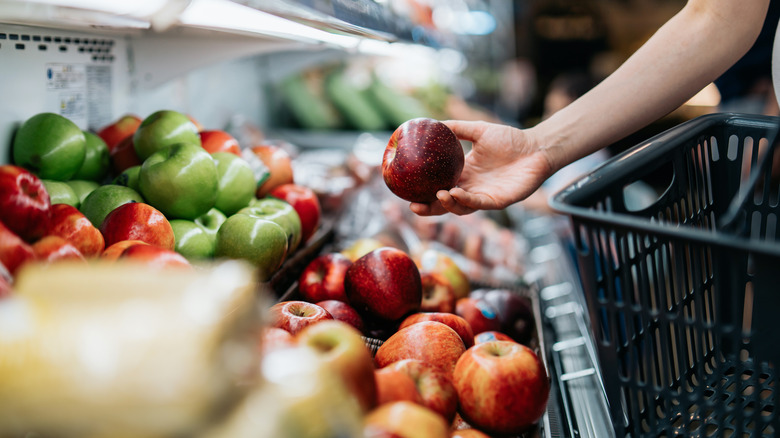The Grocery Store Red Flag That Should Send You Running
Grocery stores can be a bit chaotic. From spoiled cabbages to wonky carts to kids throwing tantrums, there's a lot that can go wrong. While we might shrug off some of these things, there's one red flag you shouldn't ignore: a dirty floor.
Now, don't get us wrong. Messes happen, and more often than not, they're caused by customers. All it takes is a curious kid or a clumsy shopper to spill soda or knock something over. That's totally normal when everyone's juggling bags, carts, and armfuls of stuff (some of which they probably shouldn't buy in the first place). But here's the thing: These messes should be cleaned up pronto. If you walk in and recognize stains from your last visit, it might be time to consider shopping elsewhere.
A dirty floor isn't just an eyesore — it's a health hazard. When something like a salad bag, fruit, or a packet of chips falls on the floor, it picks up all sorts of nasty germs from hundreds of shoppers' shoes. Spills that aren't cleaned up quickly can lead to slippery accidents. And if the floor's a mess, there might be other things the store is slacking on when handling your food.
If the floor's a mess, what else is?
The floor is usually the first thing people notice when they walk into a store, more so if it's a dirty one. That's why most stores try to keep it spotless. If you see a boba tea spill just sitting there drying up, it's likely because the store is short-staffed. If you see employees standing around chatting over the spill, though? They either really couldn't care less, or never received basic training. It doesn't look good either way.
There are many things customers don't see that need cleaning, such as top and bottom shelves, fridges, freezers, conveyor belts in the checkout aisles, and the back rooms. All these places and things need regular cleaning to keep food safe and avoid contamination. There are also a plethora of other hygiene procedures to follow when processing and storing fresh food. If a store struggles to maintain its most visible areas, such as the floor, it's time you start questioning what's really going on with your food behind the scenes.
An aging floor can signal a failing store
Sometimes a floor has seen so many years and shoppers that it simply cannot be cleaned properly anymore. If the floor in your go-to grocery store is that old, other critical equipment might also be begging to retire. While an outdated website won't impact food safety, outdated physical infrastructure certainly will. For example, old freezers in the freezer aisles may not work as efficiently as newer models and fail to provide the proper temperatures needed to keep food fresh and safe. This increases the risk of spoilage and reduces the shelf life of your meat, fish, and vegetables. Likewise, aging ventilators cannot do as much to control air quality, leading to mold growing in places you can't see. Perhaps worst of all, old plumbing systems can cause leaks, and that's bad news if it's near where food is stored or prepared.
The floor is a basic indicator of how seriously your grocery store takes hygiene. A dirty floor suggests the store is cutting corners by not having enough staff, not training them right, or not updating their equipment. It's a red flag for less apparent problems in food safety, and if you notice it, it's probably time to consider switching to a more reliable grocery store.


